By Lawrence Haywood, Mar 1, 2025
Parts of the borders between Vietnam and China are marked by barbed wire and black signs with skulls on them, hinting at the history of animosity between the two countries. Ban Gioc Waterfall also straddles the international border between the two countries in Vietnam’s Cao Bang Province, but this a site where it’s hard to feel anything but pure harmony.
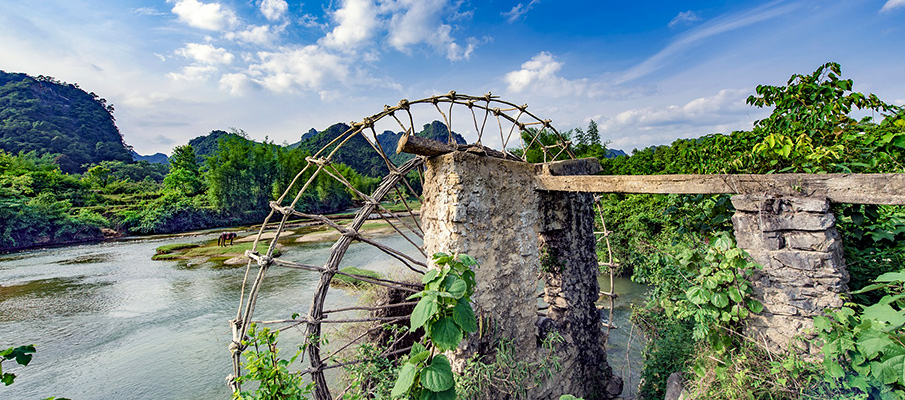
A corner of Cao Bang Province
While not the tallest waterfall in Vietnam, it is the 300-metre width of Ban Gioc and its many pools that captivate visitors. Detian Waterfall, as it’s known from the Chinese side, is a stunning cascade of small waterfalls in a concave area, falling over limestone rocks down several levels, squeezing between trees and resting in emerald waters that reflect the greenery of their surroundings.
Ban Gioc Waterfall is the biggest in Asia, featuring a dramatic backdrop of a beautiful range of limestone mountains, the kind that are iconic in northern Vietnam and southern China. Lush rice paddies and slowly sloping tree-topped hills encircle the falls, creating an idyllic Vietnamese scene that everyone in the country knows about, but very few have visited.
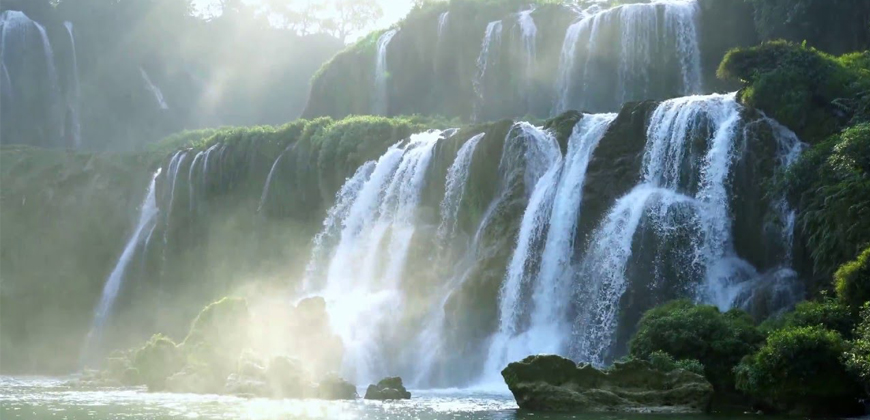
Ban Gioc Waterfall
While getting to Ban Gioc is indeed quite an undertaking, there are several activities to do here and areas to visit around its home province of Cao Bang, meaning that at least a full day is required to see and do everything of note in this naturally-gifted province.
Ban Gioc is more than just a pretty picture. There is a wealth of opportunities for visitors to explore the waterfalls by getting on, in, or above it. A boat tour is a traditional service; visitors can pay 100,000VND ($4-$5) per person to get a boat onto the lake that comes within spitting distance of the falls, where the mist descends on you like languid rain. You can swim in some of the pools on the Vietnamese side of the lake and you can climb a disused trail to the mid-point of the falls, giving you an impressive view of the tumbling waters as they crash into the bottom pool.
Like the cave at Pac Bo, Nguom Ngao Cave has a deep-rooted history and was used as a shelter, this time during the 1979 war with China. It was discovered by the Tay Hill tribe in 1921, who named it after the group of tigers who supposedly lived inside. Nguom Ngao Cave features incredible stone cacti and various stalactites in bizarre shapes, including a thick, smooth and shiny rock in the shape of a hanging lotus chandelier. Tours to the cave will take you about 900 metres into its overall length of 2100m, but this is enough to get a good feel for the cave and see its most interesting selection of rocky depictions.
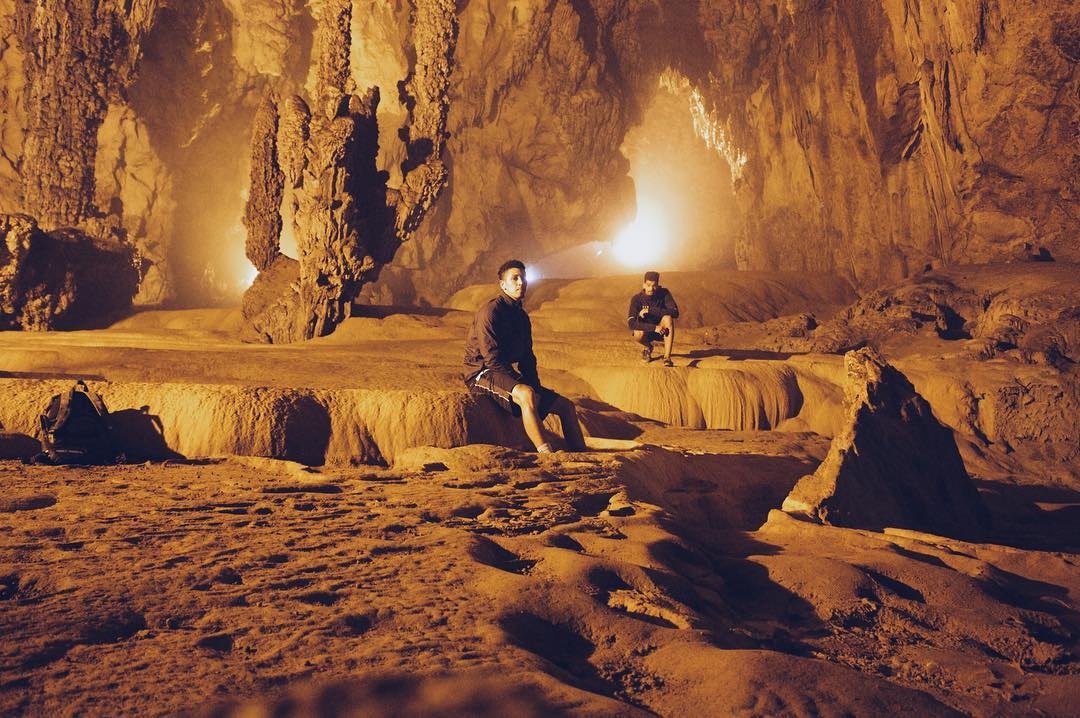
Nguom Ngao Cave with masterpieces in stone
A beautiful site of historical significance in Vietnam, Pac Bo lies about 50km north of Cao Bang City and marks the start or end of the Ho Chi Minh Trail. Pac Bo is the verdant home to incredible northern Vietnam scenery along with a cave where Ho Chi Minh hid for a few weeks after re-entering Vietnam through China for the first time in 30 years. His return is obviously celebrated widely in Pac Bo, where you can find a new Ho Chi Minh Museum, along with a few communist-themed natural sites like Karl Marx Mountain and Lenin Creek.
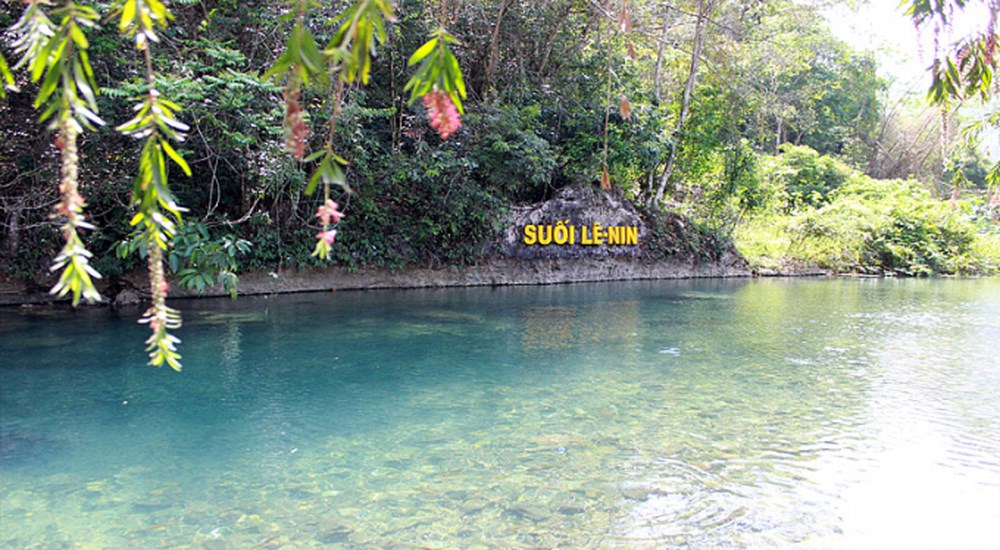
Lenin Stream in Pac Po Cave
The still green waters of Thang Hen Lake perfectly mirror the shimmering silhouettes of the forested mountains on its banks. The water of Thang Hen comes from a nearby cave, feeding the diamond-shaped lake where humble boat trips skim the surface, offering visitors another example of utter serenity in Cao Bang.
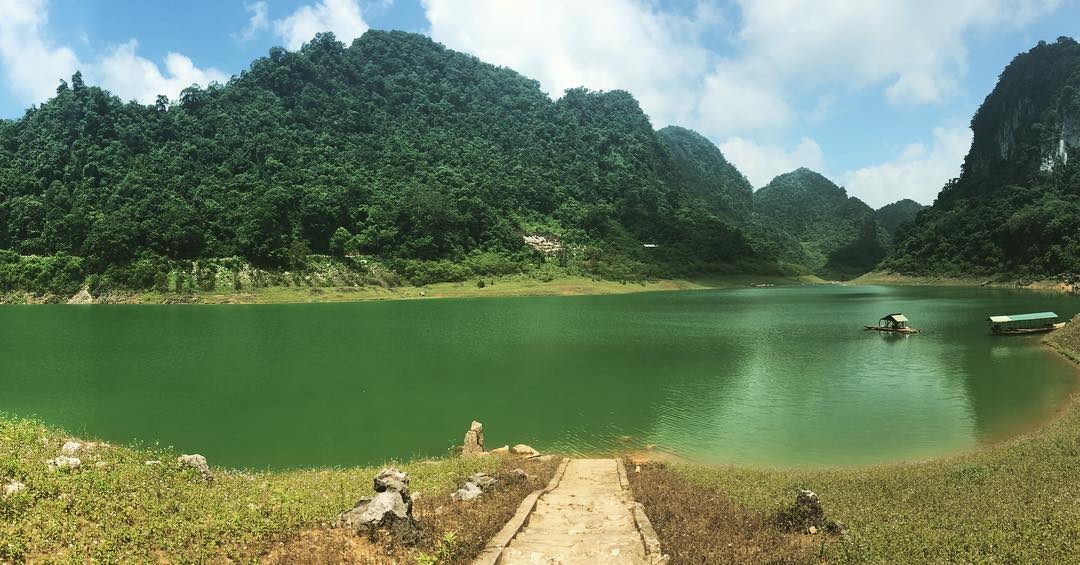
Thang Hen Lake - The romantic lake in Cao Bang Province
The lack of domestic (and often, foreign) interest in Ban Gioc is because travelling there is no simple task. It is about 360 kilometres from Hanoi to Ban Gioc, and 315km from the tourist-friendly destination of Ha Giang. Even from Cao Bang City, capital of the province in which Ban Gioc lies, it is another 80 kilometres, meaning getting there takes quite a bit of planning.
For those with time and a motorbike, heading to Ban Gioc can be an adventure in itself. The drive from Hanoi is far from boring, offering many stops along the way and viably making a return trip to Ban Gioc a 3, 4 or 5 day adventure. From Hanoi, you can drive to Thai Nguyen, home of Tam Dao National Park and its wonderful sun bear rehabilitation programme, heading onto the serene Ba Be Lake in Bac Kan Province before setting out early to get a full day at Ban Gioc Waterfall and its surrounding attractions.
For those not overly confident on a motorbike, buses offer comfort and (relative) safety on the way from Hanoi to Ban Gioc. Daily buses from My Dinh Bus Station in Hanoi take about 6 hours to get to Cao Bang City and from here you need a bus to Trung Khanh, before finishing the final 20k leg of the journey by taxi or xe om, the local motorbike taxi. If time is an issue, My Dinh Bus Station offers night buses from Hanoi to Ban Gioc, leaving late at night and arriving in the early morning after you have prized yourself out of the fully reclined seats built exclusively for the slender Vietnamese.
Though beautiful year-round, the surrounding areas of Ban Gioc tend to fluctuate with the seasons. New blossoms in spring lend the scene a vivid red to match the blue of the sky and the green of the forest, with gold coming a few months later in the form of adult rice ready for harvest. Between late February and early June would be the best times to visit Ban Gioc for its warm and dry weather, but the views of the ferociously plummeting falls between mid-June to September due to the wet season are also very appealing.
Autumn and winter tend to offer more docile water and clearer water, which is probably the best time to go for swimming and boat trips. Winter is low season in Cao Bang as its very northern latitude and high altitude above sea level often subjects Ban Gioc and Cao Bang in general to blasts of cold weather.
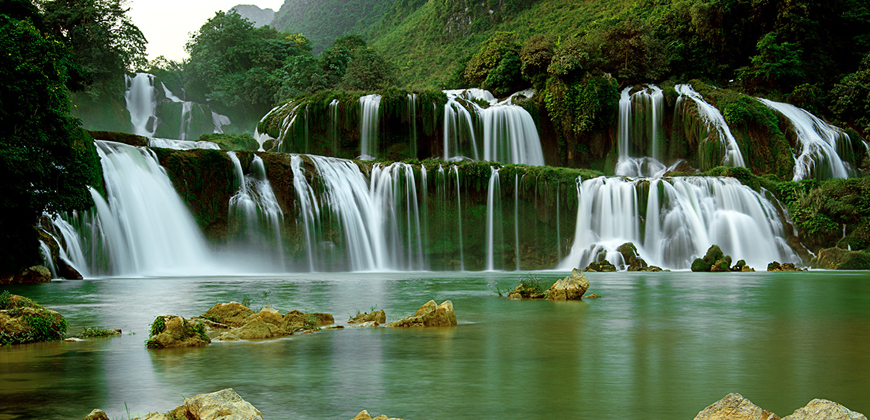
Ban Gioc Waterfall
Check our tour of Ban Gioc Waterfall:
Along with the tourist essentials of a camera, swimming trunks and sun cream, there are a few literal essentials that visitors need to remember if they want to see Ban Gioc at all. Being an international border, passports for foreigners and ID cards for locals are required, though nothing will be stamped as you are not actually crossing into China.
Highs of around 31°C (88°F) in spring and summer time along with much sun exposure mean that airy clothes, sunglasses and sun cream are a must. If you don’t have a rain poncho during the summer, you might want to invest in one as clear skies during this season often transform into clouded ones in the blink of an eye, casting downpours of rain that can last for several hours.
While rain doesn’t make much of a threat during the winter, the averages of around 15°C (59°F) mean that some more substantial clothing will be required.
So, Incredible Asia Journeys is here to help you plan the perfect Vietnam tour packages, drop us a message then let us complete your plan trip!